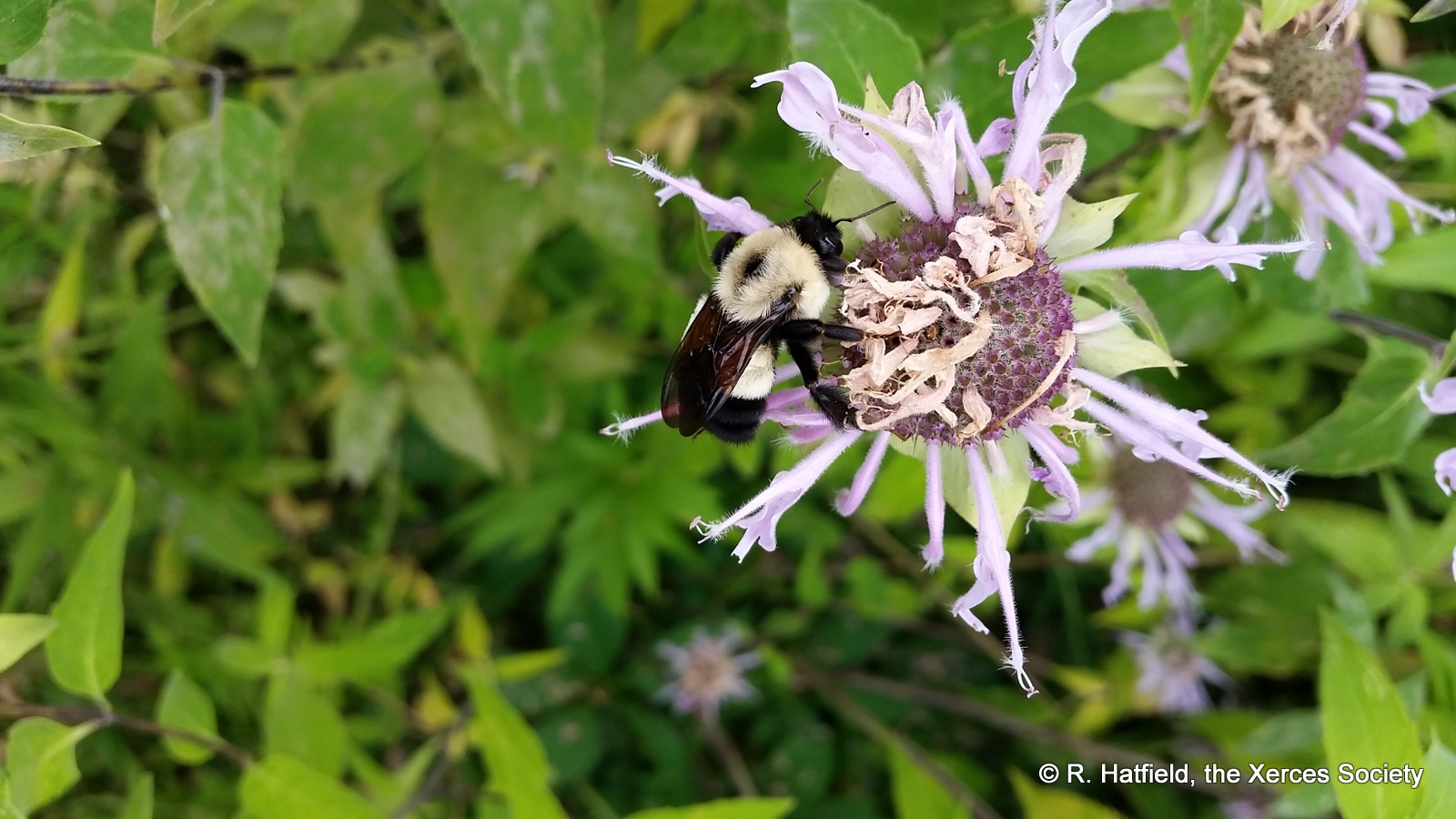Bumble Bee Disappears from Vermont
Nov. 2nd 2016A rusty patched bumble bee queen is only two centimeters long. In late fall this tiny insect will be the only surviving member of her colony. Completely alone, she’ll burrow into the ground for the winter and wait till spring, when she’ll emerge to search for a nest site in an abandoned rodent burrow. After laboriously collecting the nectar and pollen needed to fuel her first clutch of workers, she’ll lay the eggs that will initiate a brand new colony. Each generation of Bombus affinis begins like this: a hole underground, and a single queen barely bigger than your thumbnail.
Until recently, the rusty patched bumble bee was common as far south as Georgia, north into Quebec and Ontario, and west to the Dakotas, occupying 31 states and 15 ecoregions. A steep decline in the 1990s reduced the species’ spatial extent by 92%. In many states, including Vermont, B. affinis has entirely disappeared.
In response to concern from scientists like UVM’s Leif Richardson, the U.S. Fish and Wildlife Service (USFWS) published a Species Status Assessment of B. affinis in June 2016. The report relies on occurrence data compiled by Richardson in the Bombus of North America database, an extensive collection of museum records, surveys, and citizen science observations. USFWS proposes listing the species as endangered: their estimates of population decline, habitat loss, and future stressors suggest that the rusty patched bumble bee faces range-wide extinction within 5 to 30 years.
Accurately tracking the population trends of a small insect can be challenging. USFWS examined changes in three measures of species viability: resilience (population size and relative abundance), representation (adaptive diversity as indicated by spatial extent), and redundancy (risk of extirpation from catastrophic events).
Because B. affinis and related species do not disperse farther than 10 kilometers from their colonies, USFWS overlaid the species’ entire range with 10km x 10km grids. Any B. affinis recorded within the same grid square in the same decade was regarded as a single “grid occurrence,” a rough analog for a discrete population made up of several densely aggregated colonies. USFWS then traced the declining trends in number of grid occurrences and percent occupancy of grids between decades. From 146 discrete populations in the 1980s, B. affinis fell to 98 populations in the 1990s and only 69 populations between 2000 and 2015. Twenty-three percent of grids were occupied in the 1990s; five percent remained occupied during the last 15 years.
USFWS used representation within different ecoregions as a proxy for adaptive diversity of the species. This metric dropped from 15 distinct ecoregions occupied at various times over the last century to only 6 at present – a 60% decline in representation.
Rusty patched bumble bee populations are subject to a variety of stressors, including the genetic consequences of small population sizes and the threats posed by pathogens, pesticides, habitat loss, and climate change. Of particular concern are the parasitic fungus Nosema bombi, one of the pathogens thought to be largely responsible for the recent collapses of both wild and commercially bred bumble bee populations, and neonicotinoid insecticides, whose widespread introduction in the 1990s coincided with the rapid decline of B. affinis. Based on input from experts, USFWS classified stressors according to probable level of influence and developed three future risk scenarios modeling the effects of these pressures on the rate of decline, number of extant populations, and spatial extent of B. affinis. While the rate of decline varied between models, all three risk scenarios projected that within 30 years, not a single population of rusty patched bumble bees will remain on the continent.
B. affinis is already listed as endangered in the state of Vermont. In 2012-2013 the Vermont Center for Ecostudies conducted a statewide citizen science inventory of bumblebees. Out of more than 10,000 specimens, they found zero rusty patched bumble bees. The USFWS report does not specify what measures will be put into place if the bee attains the status of a federally endangered species – but that recognition may be the first step toward increasing the number and distribution of this vital pollinator throughout its range.
 ecoNEWS VT
ecoNEWS VT